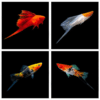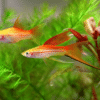To provide the best experiences, we use technologies like cookies to store and/or access device information. Consenting to these technologies will allow us to process data such as browsing behaviour or unique IDs on this site. Not consenting or withdrawing consent, may adversely affect certain features and functions.
The technical storage or access is strictly necessary for the legitimate purpose of enabling the use of a specific service explicitly requested by the subscriber or user, or for the sole purpose of carrying out the transmission of a communication over an electronic communications network.
The technical storage or access is necessary for the legitimate purpose of storing preferences that are not requested by the subscriber or user.
The technical storage or access that is used exclusively for statistical purposes.
The technical storage or access that is used exclusively for anonymous statistical purposes. Without a subpoena, voluntary compliance on the part of your Internet Service Provider, or additional records from a third party, information stored or retrieved for this purpose alone cannot usually be used to identify you.
The technical storage or access is required to create user profiles to send advertising, or to track the user on a website or across several websites for similar marketing purposes.




 Golden Eyes Vampire Crab - Geosesarma Sp. - Decapod Crustacean
1 × £8.71
Golden Eyes Vampire Crab - Geosesarma Sp. - Decapod Crustacean
1 × £8.71 











Emily Carter (verified owner) –
I recently purchased 10 Red Lyretail Swordtails for my freshwater aquarium, and I couldn’t be happier! These little guys are not only stunning with their vibrant red and green hues, but they also have such playful personalities. I’ve noticed after just two weeks that they easily get along with my other fish, including some platies, creating a lively community tank.
One thing I really appreciate is their hardiness; they’ve adapted well to my water parameters, showing no signs of stress. The shipping was prompt, and each fish arrived healthy and full of energy. The only minor concern I had was that one of them seemed a bit shy at first, but it quickly acclimated and now swims confidently with the rest.
Overall, I highly recommend these swordtails to both beginner and experienced aquarists. They bring so much joy and color to my setup, and I can see them thriving in any peaceful freshwater environment. If you’re looking to enhance your aquarium fish collection, these Red Lyretails are a fantastic choice!
Emily Carter (verified owner) –
I recently added 10 Red Lyretail Swordtails to my freshwater tank, and I can’t express how delighted I am with these stunning tropical fish! After just two weeks of having them, they’ve brought so much color and life to my aquarium. Their vivid red hues and graceful movements are mesmerizing to watch. These livebearers are perfect for beginners like me, as they’re hardy and seem to thrive in a well-maintained environment. I’ve noticed they’re quite sociable, often interacting with my other fish, which has created a lively community in the tank.
Compared to other fish I’ve kept, these swordtails have an exceptional personality and make great companions. The only minor concern was that one fish seemed a bit shy at first, but after a few days, it started to swim around confidently. I recommend these beauties for anyone looking to enhance their freshwater setup or for anyone who just wants a splash of color! They were shipped quickly and arrived healthy, which I truly appreciate as a caring fish parent. It’s been a joy having them, and I would definitely purchase them again!